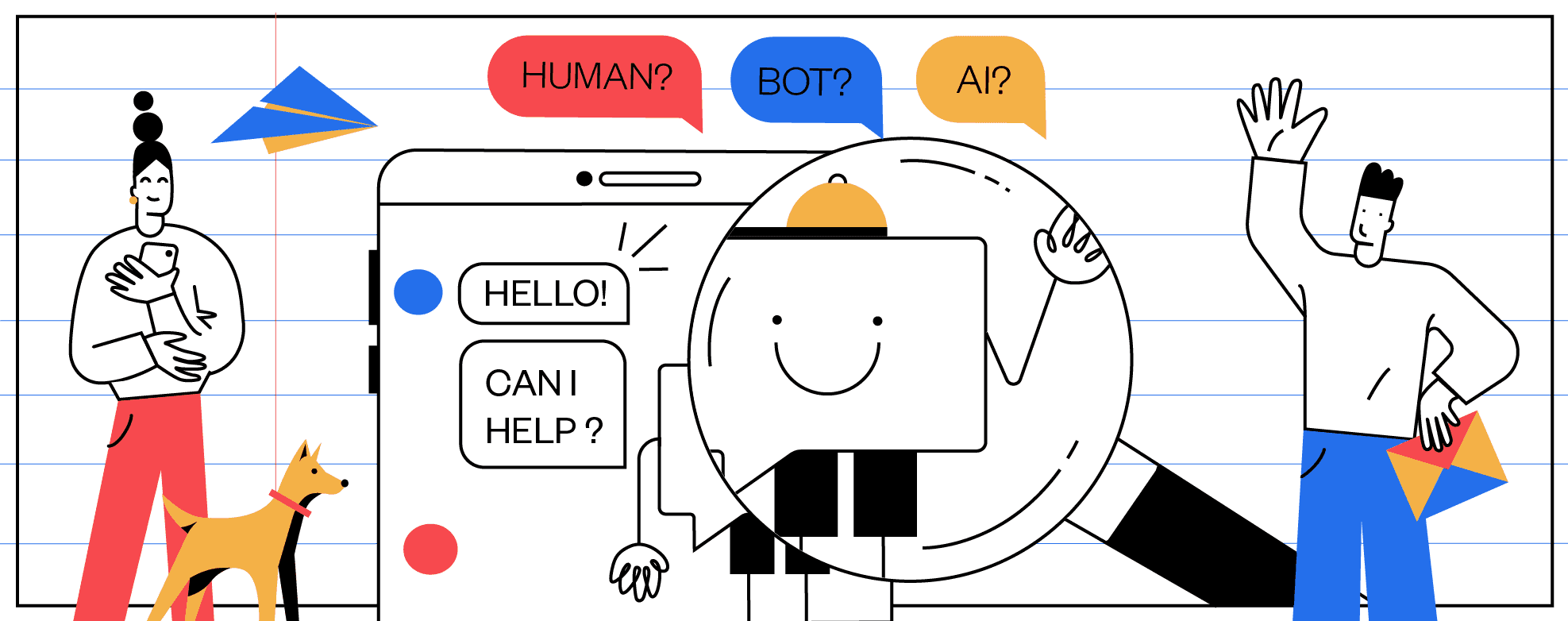For the past three years we've been providing chatbot solutions for different industries, events, finance, and hospitality included.
During that time we've realized that, when it comes to end user expectations about what a chatbot can do for them, they're usually inflated and we're partly to blame. By 'we' I mean the industry as a whole.
And here's why...
The biggest contributor to poor user experiences with chatbots in general is setting the wrong expectations - and we do this collectively. As chatbot providers it's our responsibility to educate our customers about chatbot capabilities.
However, with all the hype surrounding chatbots, and with almost every solution out there being marketed as 'AI-enabled,' it's no wonder users get unrealistic, sci-fi like ideas on what they can do and in which ways they can assist them.
The reason for all the fuss around "AI" are recent advances in machine learning which are not yet applicable to most chatbot solutions and the increased commoditization of AI algorithms.
So imagine how frustrating it is for a user when they expect a chatbot to display characteristics like empathy, contextual and sentiment understanding, etc. and what they experience at the end is a simple pattern matching with a response.
So why are we not managing expectations to prevent user dissatisfaction?
Sometimes it's just wishful thinking - we lean on the idea that our product is more advanced than it actually is and we sell that idea to our customers.
Other times, we don't believe in our product enough so we dress it up in fluff.
Or...maybe we're just being lazy...
Whatever the reason - it is a huge disservice to the customers and to the chatbot provider in the long run.
Now, let's look at some practical solutions to this conundrum.
Set Expectations During Onboarding
You know what you built your chatbot to do, but that doesn't mean it will be obvious to your customers.
That's why proper user onboarding is probably the most important thing you can do for the overall success of your chatbot...because you will:
- Help the users understand how to use the chatbot. Proper onboarding promotes clarity → users often complain that it took them awhile to figure out how to interact with the chatbot.
Are they supposed to type text only or is there a menu with different options? If there is a menu now'd be the right time to introduce it! What about buttons or quick replies? It is vital to explain to the users how they can interact with the chatbot from the very beginning.
Onboarding example from our banking chatbot Cognito
-
Guide them to discover features so they keep using the chatbot after the initial conversation. If the user is able to quickly understand what the chatbot does and how it can help them solve an issue or complete a task, they will be more inclined to continue using the chatbot in the future.
-
Demonstrate value immediately. Chatbots are not supposed to be just entertaining, they must also be useful.
If you can't show how it can help or support the user toward her goal during the initial conversation, you'll probably lose them forever. You need to fine-tune the UX to minimize user errors and avoiding words that are technical or too specific will help.
So why is all of the above so important? Setting up the right expectations during the onboarding will make users more forgiving about potential mistakes that the chatbot could make. And this can mean the difference between the success and failure of your chatbot.
More tips on managing user expectations
- Don't pretend to be human. This is definitely a poor practice but it's still very much present. If you make users believe they're interacting with a human, their expectations will be set so high up that they'll quickly get frustrated and feel like they've been fooled.
- Take responsibility. Don't make the user feel like it's their fault when your chatbot gets stuck. A message from the chatbot needs to let the user know the bot realizes its inability to help and that it's in no way user's fault. Here's how our Sava Events chatbot handles this:
- Guide the conversation. A smooth conversation between a chatbot and a user that leads towards reaching user's goal can only be achieved with skilled UX writing. After all, with chatbots, you're designing for conversation and words are your biggest asset that can point to users in the right direction, at each step.
Even if you apply all of the above tips your job is still not done. You need to continually gather, analyze, and act on the customer's preferences and irritations in order for your chatbot to be well-received and used beyond the initial conversation.

